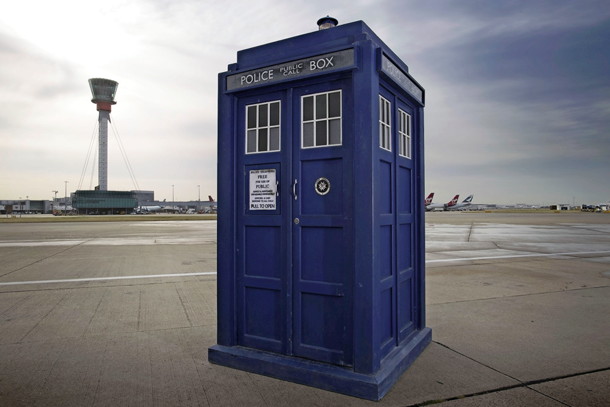SFX ’s brand-new sister mag, Science Uncovered , takes a look at how much science fact there is behind the science fiction
The 50th anniversary of the first episode of Doctor Who appearing on our screens is almost upon us. So our new sister publication, the science magazine Science Uncovered , takes a fun look at how much science fact there is behind the science fiction; written by SFX ’s very own deputy editor, Richard Edwards, the full article will appear in the first issue of Science Uncovered , available in all good newsagents from Thursday 21 November. And here’s sneak peek at an extract:
Could you build a room that appears much bigger on the inside?
Despite having the appearance of an old-school police box, the TARDIS boasts many rooms, including a swimming pool and a library
The explanation in the show for the fact that the TARDIS is much bigger on the inside than the outside is that it is "dimensionally transcendental" - its exterior and interior exist in separate dimensions. While that initially sounds plausible, unfortunately it's littered with problems. Assuming that those other dimensions are something beyond the three we observe in our everyday lives, it's unclear which dimensions the Time Lords are referring to. Physicists and mathematicians frequently use additional spatial dimensions to model complicated ideas (in superstring theory, for example), but no experiments or observations have ever proved that they exist. We're also not sure how a gateway between dimensions could be carried around in a spaceship. We think it's safe to say this is more magic trick than genuinely feasible science - hopefully, however, physicists will manage to prove us wrong one day.
Likelihood rating: 1/5

Could a human body regenerate into a different form?
Get sneak previews, exclusive competitions and details of special events each month!
In TV's most ingenious ruse for allowing a show to continue after a lead actor's departure, the Doctor has taken many forms
Regenerating a body is science fiction for now, but it's possible to build body parts - such as windpipes and bladders. "More complex structures, such as the liver, heart or the brain are very challenging," says Dr Paul De Bank from the University of Bath's Centre for Regenerative Medicine. "While it is possible to grow pieces of tissue, such as bone, muscle and cartilage, assembling these into a functional limb has not yet been achieved. But with breakthroughs in 3D printing technology, it may be possible to take the first steps towards generating functional organs." Watching the Doctor harvest cells from his body and wait as they slowly grow into replacement parts would be a poor substitute for the drama of his explosive regenerations. So, could we prompt a human body to regenerate from within? "One of the main focuses of regenerative medicine is to stimulate the body to repair itself," De Bank explains, "either by activating the stem cells, or by turning on pathways that species such as salamanders use to re-grow limbs. It is thought that we have the genetic capacity to do this."
Likelihood rating 3/5

The 50th anniversary special, "The Day Of The Doctor", will air on BBC One on Saturday 23 November as part of the BBC's 50th anniversary celebrations. To read "The Science Of Doctor Who " in full, pick up the first issue of Science Uncovered , on sale on Thursday 21 November. To find our more about the magazine, visit www.science-uncovered.com , where you can download a free sample issue! Follow Science Uncovered on twitter @SciUncovered
SFX Magazine is the world's number one sci-fi, fantasy, and horror magazine published by Future PLC. Established in 1995, SFX Magazine prides itself on writing for its fans, welcoming geeks, collectors, and aficionados into its readership for over 25 years. Covering films, TV shows, books, comics, games, merch, and more, SFX Magazine is published every month. If you love it, chances are we do too and you'll find it in SFX.


